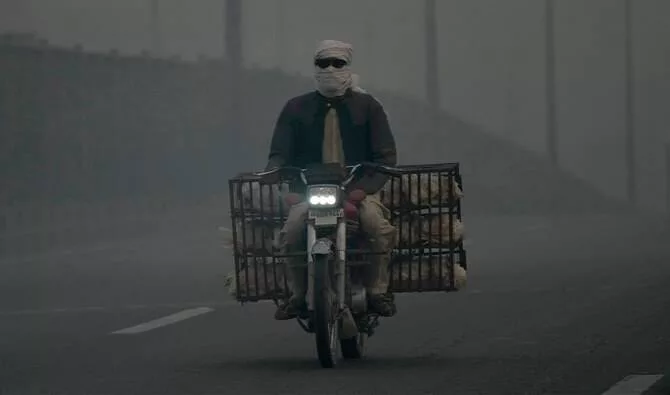On Wednesday, Lahore dropped to second place in global air pollution rankings, while New Delhi topped the list as the most polluted city in the world, according to the Swiss group IQAir.
The air quality index (AQI) in Lahore reached a hazardous level of 393, while New Delhi’s AQI soared to an alarming 721. The deteriorating air quality has caused a toxic smog to blanket both cities and their surrounding areas.
Lahore, a bustling city of 14 million near the India-Pakistan border, frequently ranks among the most polluted cities globally, but pollution levels have reached unprecedented highs this month. The worsening smog has prompted authorities in Punjab to close schools, limit outdoor activities, and impose an 8 pm closure on non-essential businesses to reduce exposure. These measures have been expanded to other heavily affected districts like Multan, Faisalabad, and Gujranwala, with schools remaining closed until at least November 17.
Multan, around 350 kilometers from Lahore, has been particularly impacted, recording an AQI above 2,000 last week—an extraordinary level that has caused shock among residents and raised health concerns across the province. The provincial Environmental Protection Agency has reported a rise in respiratory issues, eye infections, and allergies, particularly among children, the elderly, and individuals with pre-existing conditions.
Peshawar, in Khyber Pakhtunkhwa, has also experienced high pollution levels with an AQI of 187, though local authorities have not yet implemented strict measures. Meanwhile, in Punjab, poor visibility due to dense smog has led to traffic delays and accidents, including a fatal crash in Kamalia.
In response to the health crisis, the Punjab government has implemented emergency measures such as suspending sports events, exhibitions, and outdoor dining at restaurants, with exemptions for essential services and religious ceremonies. Water cannons have been deployed in Lahore to spray the streets, though their effectiveness has been limited.
UNICEF has expressed concern about the impact on children’s health, urging greater action to address pollution levels that threaten over 11 million children under five in Punjab. The World Health Organization (WHO) has warned that prolonged exposure to such high pollution increases the risks of respiratory and cardiovascular diseases.
Authorities in Punjab have partially attributed the smog to pollution drifting in from India, where northern states are also battling poor air quality. The Punjab government has indicated plans to raise the issue with India, hoping for cross-border efforts to tackle this regional health hazard.




